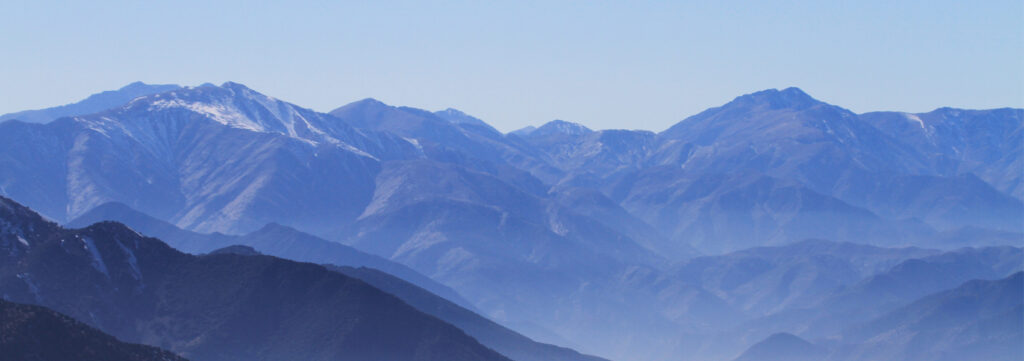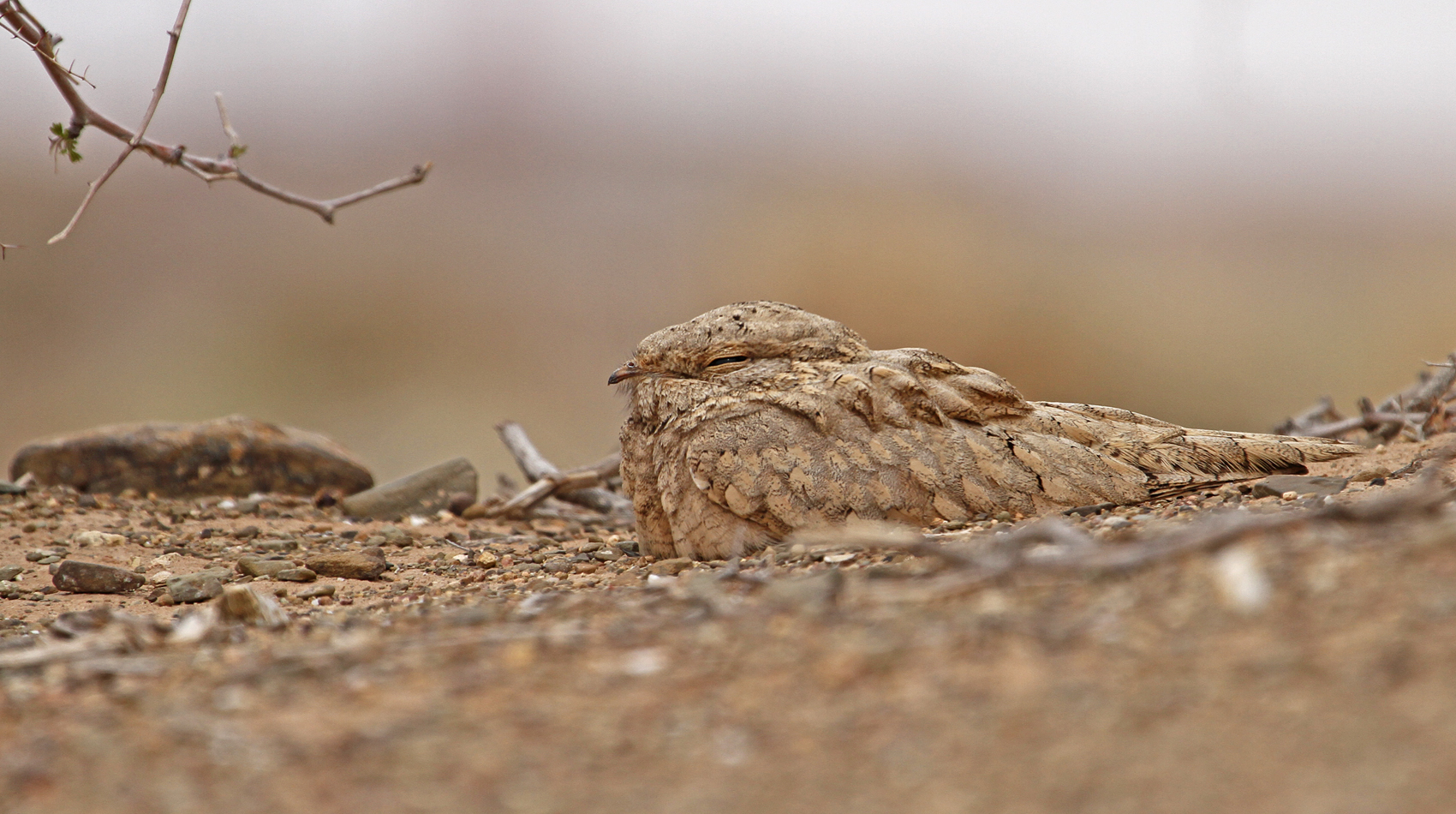
Tour Dates: Tuesday 1st April – Friday 11th April 2025 (Marrakech to Marrakech)
Tour Price: £1,999pp plus flight
Estimated Flight Price: London to Marrakesh approx. £300 return
Deposit: £400 per person
Conservation Donation from Wise Birding: £200 – £300
Minimum Number: 4 people
Maximum Group Size: 7 people
Target Birds:
Northern Bald Ibis, Moussier’s Redstart, African Crimson-winged Finch, Levaillant’s Woodpecker, Pharaoh Eagle Owl, Egyptian Nightjar, Maghreb Wheatear, Red-rumped Wheatear, Seebohm’s Wheatear, Greater Hoopoe Lark, Temminck’s Horned Lark, Thick-billed Lark, Tristram’s Warbler, Scrub Warbler, African Desert Warbler, Cream-coloured Courser, Fulvous Babbler, Blue-cheeked Bee-Eater, Crowned Sandgrouse, Spotted Sandgrouse, Plain Martin and Desert Sparrow.
Tour Summary
Birding in Morocco is both scenic and exciting and the country has many first class birds, including a number of near-endemics such as the stunning Moussier’s Redstart, Tristram’s Warbler, Levaillant’s Woodpecker and more than 100 breeding pairs of Northern Bald Ibis.
This tour follows the birdlife of the Sahara desert, the Atlas mountains, the Atlantic coast and the Sous/Massa wetlands as well as incorporating the spectacle of spring migration from Africa to Europe. From the snow-capped Atlas Mountains at around 2600m, to the low lying beautiful dunes of the Sahara Desert; the birds we see are always against an impressive backdrop wherever we are! In early spring birds are migrating to Europe and the beautiful Morrocan landscape explodes into bloom, helping the numerous passerines on their northward migration. However, for many, it is the numerous mouth-watering near endemic and desert specialities that can be found in Morocco that have the biggest draw and the list is long! Whether it be watching the prehistoric looking and critically endangered Northern Bald Ibis flocks shuffling across the coast at Tamri, seeing beautiful male Moussier’s Redstarts perched on roadside bushes, waiting at dusk for a view of the mystical Egyptian Nightjar or Pharaoh Eagle Owl, searching for small groups of Cream-coloured Coursers and Thick-billed Larks on the now famous Tagdilt Track, sifting through migrants in a desert hotel garden, watching African Desert Warblers in the sand dunes or simply enjoying the desert scenery amongst camels, or watching the sun set on the mighty Massa Estuary, there is something for everyone on a Morocco birding adventure!
ACCOMMODATION: 10 nights in Morocco
Very comfortable hotels throughout the tour
2 nights Marrakech; 2 Boumalne Dades; 3 Merzouga; 1 Ouarzazate & 2 nights Agadir
Inclusive Meals: Full board
DAY 1: Arrival Marrakech
After meeting at Marrakech airport, if there is still daylight we can begin birding straight away! Common species within walking distance of the terminal building include House Bunting, Common Bulbul and both Pallid & Little Swift. Migrants are also possible and can be found in the nearby gardens. Overnight Marrakech
DAY 2: Atlas Mountains
This morning we will drive up into the High Atlas Mountains and visit the ski resort of Oukaimeden (2,600M). As we drive along the cultivated valley we should find a good mix of resident and migrant species such as, Woodchat Shrike, White Stork, Common Crossbill, Hawfinch, House, Rock and Cirl Buntings and we will keep our eyes peeled for the first stunning Moussier’s Redstart. Higher up among the rocky slopes we will search for Barbary Partridge and Levaillant’s Woodpecker.
When we finally reach the snow capped ski resort of Oukaimeden we will take some time to admire the stunning scenery before beginning our search of the snowline for the specialities of this area. The handsome African Crimson-winged Finch will be at the top of the list along with Seebohm’s Wheatear, and Shore Lark as well as Rock Sparrow, Water Pipit and large flocks of Red-billed and Alpine Choughs. After having fully explored this wonderful area we will slowly return to Marrakech. Overnight Marrakech
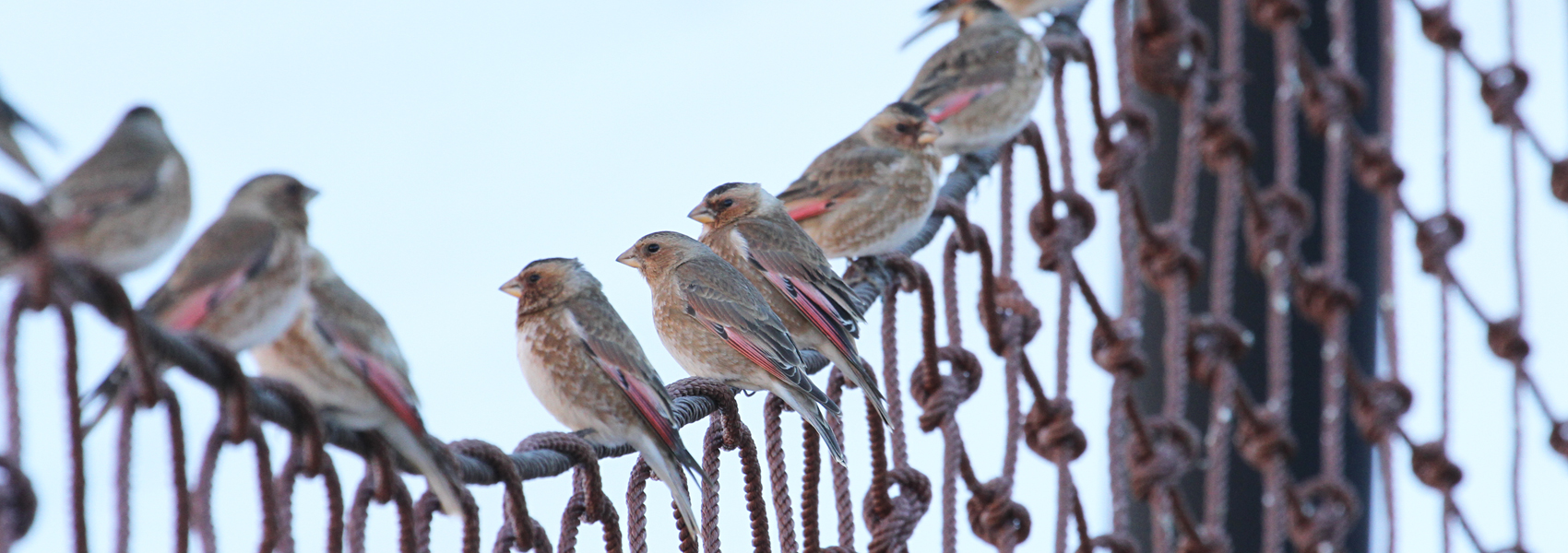
DAY 3: Marrakech – Boulmalne Dades
We will drive through the High Atlas Mountains where the snowy peaks can be seen for miles and the habitat changes surprisingly quickly. We will make a few stops in suitable habitat and also to scan for raptors with resident and migrant birds such as Lanner, Barbary Falcon, Black Kite, Long-legged Buzzard, Short-toed & Booted Eagle all possible. Before long we will find ourselves winding higher and higher as we pass through the exhilarating Tizi – Tichka pass. It is an impressive place to take a short break at the top of the pass to admire the geological rock formations before continuing on our journey to the Plains. The road continues down the other side and continually winds back and forth, but we will take a few tea/coffee breaks at various points which often turn up new species! Key birds we could see en route are Levaillant’s Woodpecker and maybe Maghreb Wheatear too. Once we descend from the high pass, the habitat begins to change again and we will have time for lunch and a short walk through a small stream surrounded by olive and palm trees. This habitat is likely to have migrants like Tree Pipits, Yellow Wagtails and Wryneck. We will then arrive in Boumalne with impressive views to the Dades River. Overnight Boumalne Dades
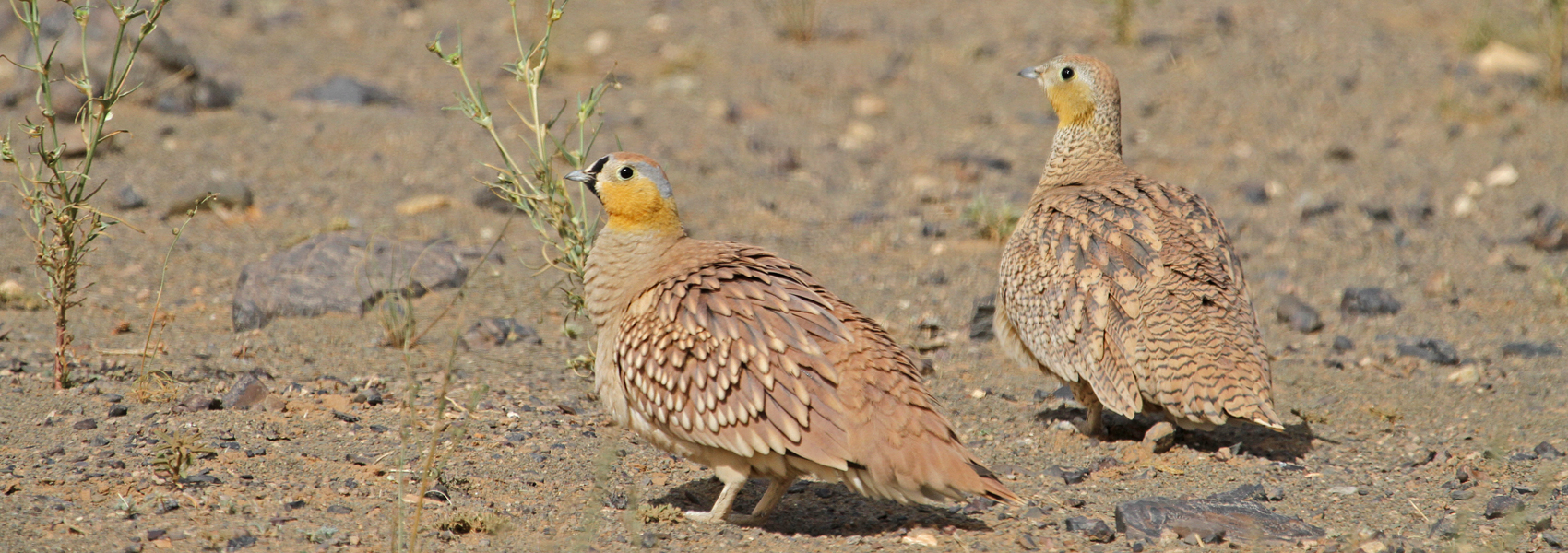
DAY 4: Hammada Stony Desert
After a good night’s sleep, we will be up early to try for Pharaoh Eagle Owl and then we will visit the famous Tagdilt Track. Despite the depressing sight of a nearby rubbish tip at this site, this is still an excellent spot for some very special birds. Careful searching of the area could reveal Cream coloured Courser, Black-bellied & Crowned sandgrouse, Thick-billed, Bar-tailed, Desert and Temminck’s Larks, as well as Red-rumped and Desert Wheatears and Trumpeter Finch. Desert Wheatears and Red-rumped Wheatears are common and Maghreb Wheatear will no doubt take some perseverance to find. Lanner and Long-legged Buzzard are also likely here. After lunch we can check suitable migrant habitat for Hoopoe, Bee-eater or Orphean Warbler. Overnight Boumalne Dades
DAY 5: Boumalne Dades – Merzouga
After a morning visit to the Tagdilt Track for any species that we may have missed, we then head towards Merzouga. En route we will visit the very impressive Todra Gorge where we usually find Tristram’s Warbler and there is a good chance of seeing Bonelli’s Eagle whilst enjoying tea!
The drive east will involve a number of stops as we check out the numerous wadis and palm-fringed oasis. This is exciting birding and the possibilities are endless as these areas can often be full of migrants re-fuelling before continuing their journey north into Europe. We will be looking for gems such as the superb Blue-cheeked Bee-eater, Subalpine Warbler and European Bee-eater amongst many others. Overnight Merzouga
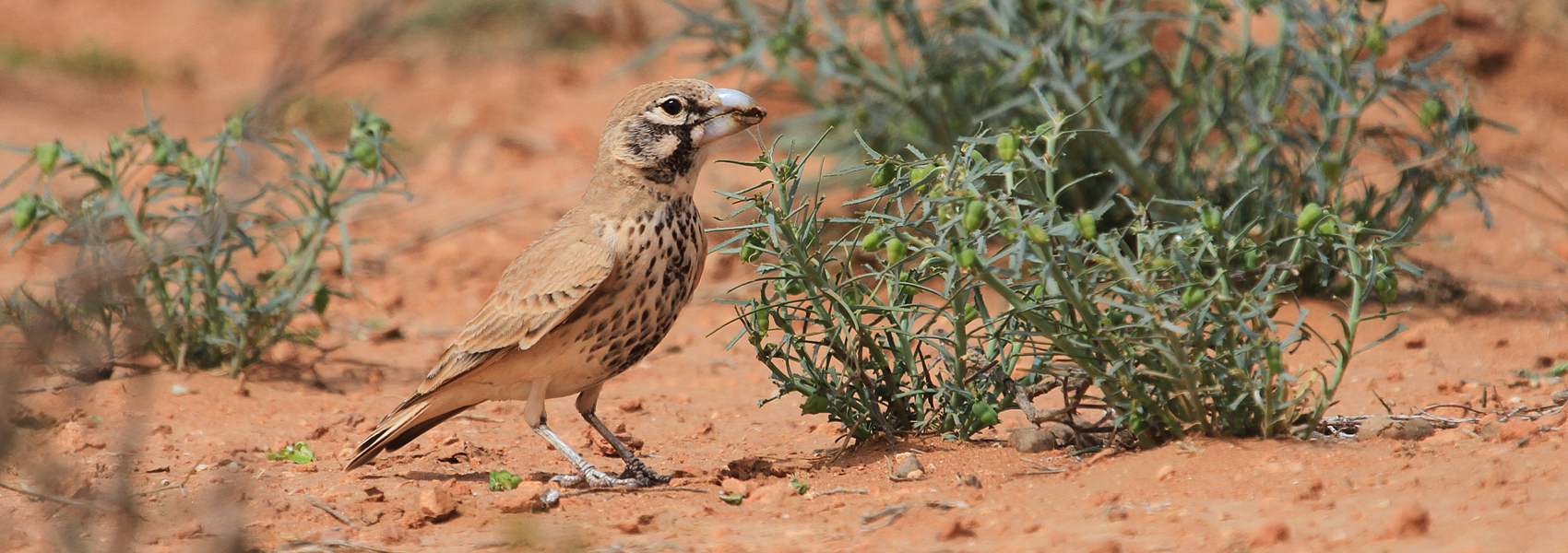
DAYS 6 – 7: The Sahara Desert
Dependent on recent weather and the abundance of migrants, a short stroll from our Auberge on the edge of the Sahara, can produce many exciting migrants and every day is different. Just some of the species we hope to find include, Eurasian Scops Owl, Woodchat Shrike, Wryneck, Rufous-tailed Scrub Robin, Bluethroat, Western Orphean Warbler, Western Bonelli’s Warbler, Eastern Olivaceous Warbler, Common Redstart, Common Nightingale, and groups of European Bee-Eaters to name just a few! We will spend the next two days checking various sites around the edge of the red sand dunes of the Erg Chebbi, the largest dune system in Morocco. Our major prize should be found around the various cafes that are dotted about the landscape, and in one of these remote outposts we hope to find the pallid but beautiful, Desert Sparrow. Other species we will search for include Fulvous Babbler, Greater Hoopoe Lark, Brown-necked Raven and the superb African Desert Warbler. There are sometimes seasonal lakes that appear in the desert which attract wildfowl, waders and even terns. Seeing such species in this arid habitat is a bizarre sight. We will also be scanning the skies for visible migration, and as the day warms up it is possible to see good numbers of storks and raptors rising on the thermals and heading north to their breeding grounds. One of the key birds of our visit to the desert will of course be looking for Egyptian Nightjar! This mystical species was always difficult to find, but thanks to the local nomads it is almost guaranteed on a trip these days! We will focus on the desert specialities whilst in this region, taking advantage of our 4X4 vehicles to find the harder species like Sandgrouse as both Crowned and Spotted are possible. Other species we will see over the two days should include Greater Short-toed and Bar-tailed Larks, Spectacled Warbler, Trumpeter Finch and Southern Grey Shrike. If we are exceptionally lucky, we may even come across the rare Dunn’s Lark which sporadically push up from the south. Overnight Merzouga
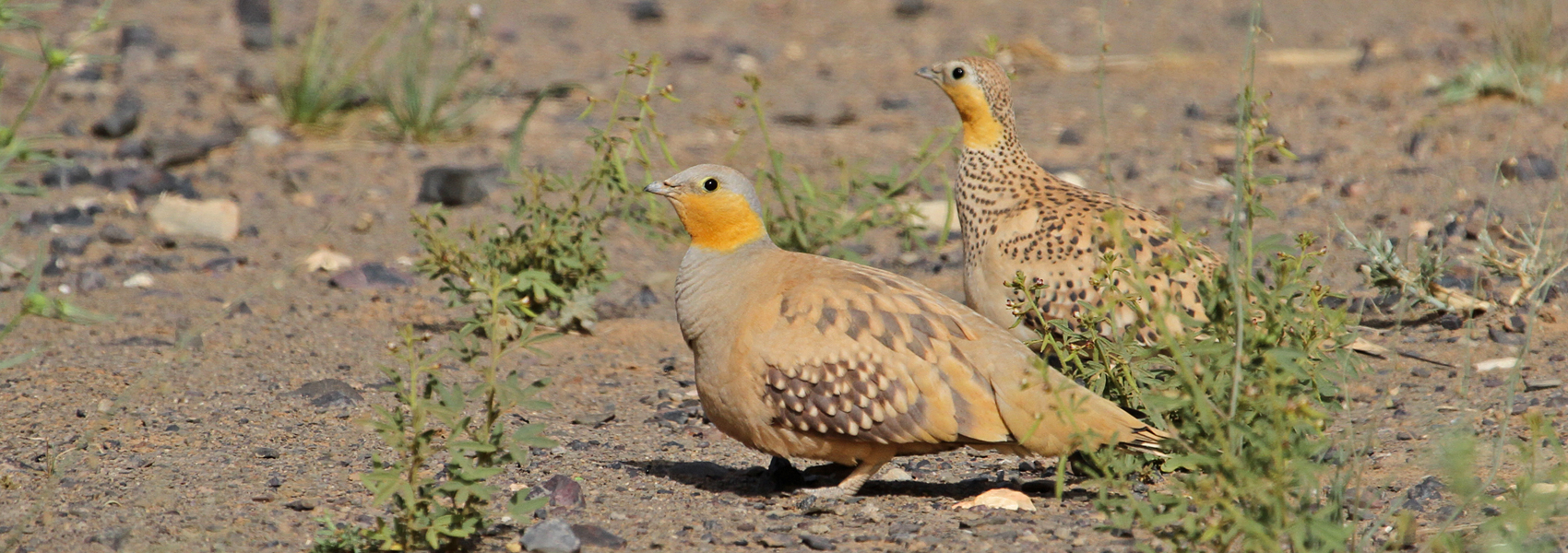
DAY 8: Merzouga – Ouarzazate
Today is mostly a travel day. We will drive through the Anti-Atlas and take in the impressive volcanic geological formations with the ever changing rocky hills, cliffs and deep gorges. Roadside birding stops will hopefully produce some migrants. By the end of the day we will visit Ouarzarzate Reservoir. This site should reveal a good variety of birds like Ruddy Shelduck, Marbled Duck, Western Osprey, Eastern Olivaceous Warbler, Blue-cheeked Bee-eater, Pallid Swift, White Stork and a good selection of waders. Rarities are also possible. In March 2017, we found a laser Scaup here. Overnight Ouarzarzate
DAY 9: Ouarzazate – Agadir
Today we head for the Atlantic coast and though mostly a travel day, we will make a few stops. If we still have not seen Maghreb Wheatear, we can try another area that sometimes has a breeding pair. We will stop for a packed lunch en route amongst the Argan Trees where we should find some migrants along with Thekla Lark and Western Orphean Warblers.
By the afternoon we will be in the fertile Sous Valley where the habitat is vastly different to the previous few days. Here the landscape consists of scrub thickets and citrus groves where we could find Black shouldered Kite and the odd migrating Montagu’s Harriers. Several stops will again, no doubt produce interesting migrants passerines, raptors, waders or storks. Overnight Agadir

DAY 10: The Atlantic Coast
An early start will see us ahead to the Atlantic coast. We will spend the morning in the Sous Massa National Park. We will walk all along this important area for the critically endangered Northern Bald Ibis. This is an extremely important bird population and we will savour the views of these subtly beautiful Ibis. Searching the vegetation along the water’s edge may reveal skulking Squacco and Purple Herons and the distinctive calls of Black-crowned Tchagras will no doubt distract us. Other birds here may include Isabelline Warbler, Marbled Duck, Marsh Harrier, Osprey, Black-shouldered Kite, Glossy Ibis and hopefully Plain Martin too. Overnight Agadir
DAY 11: Agadir – Marrakech
This morning we will drive to nearby Tamri where we will spend time watching one of the world’s biggest colonies of Northern Bald Ibis. This is sure to be one of the highlights of the tour as the birds are often very approachable in a vehicle, allowing great photographic opportinities. Other species we hope to see are Audouin’s Gull, Zitting Cisticola, Barbary Partridge and Moussier’s Redstart. During the late afternoon we head to Marrakech (just 3 hours away) for an evening flight back to the UK where the tour concludes.
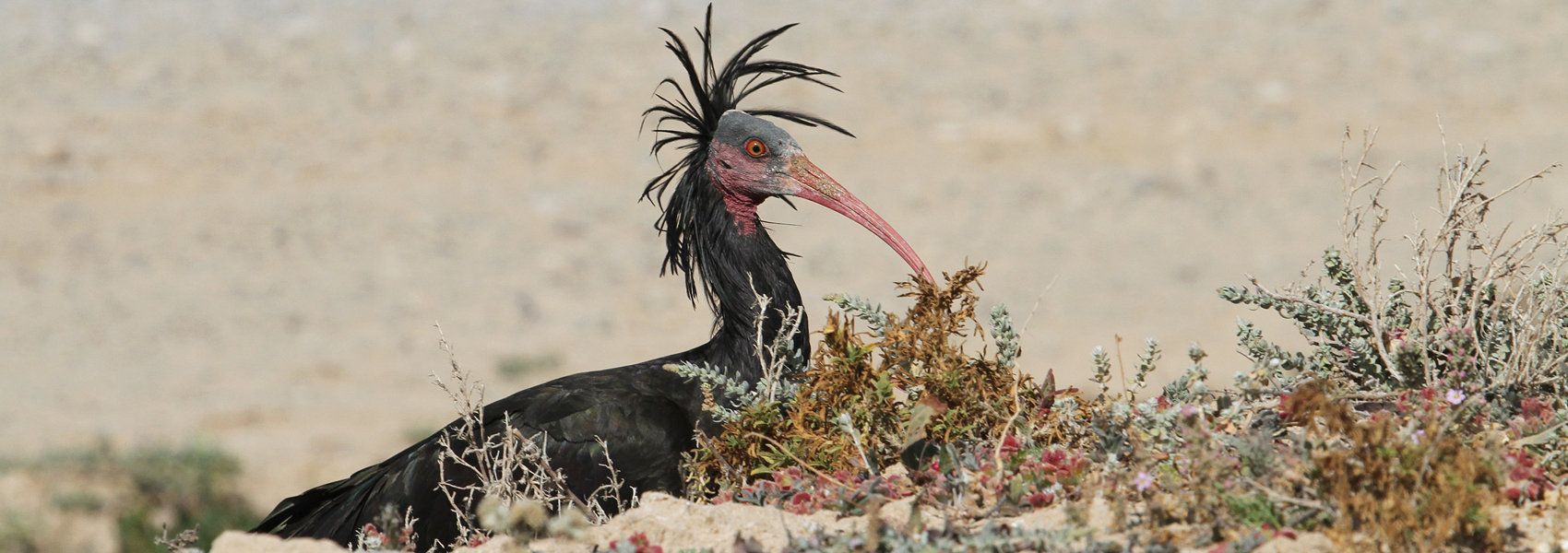
Please note this is a flexible itinerary which may need to be adjusted slightly dependent on arrival / departure times, weather conditions and the most recent information from our local guides
Leaders: Wise Birding leader
Included in cost: Accommodation in twin en-suite rooms, all meals, bottled water, all transport and services of the leaders
Not included in cost: International airfare, travel insurance, alcoholic drinks and any airport/visa fees
Single Supplement: £299
Transport: Dependent on group size
4×4 Toyota Landcruisers throughout or A/C Minibus and 4×4 Landcruisers in the desert only.
Difficulty: Easy
The majority of birding is done in close proximity to the vehicle with some short walks on relatively flat terrain. Sous Massa and the Tagdilt Track may involve some longer walks when searching for species and Oukaimeden may involve a little more uneven terrain to find the specialities.
Climate: Generally warm & sunny in the day though can be quite cold in the early morning and evening. Rain is also a possibility.
Tour Start Point: Marrakech airport, Morocco
Tour End Point: Marrakech airport, Morocco
Suggested Airlines: Easyjet
